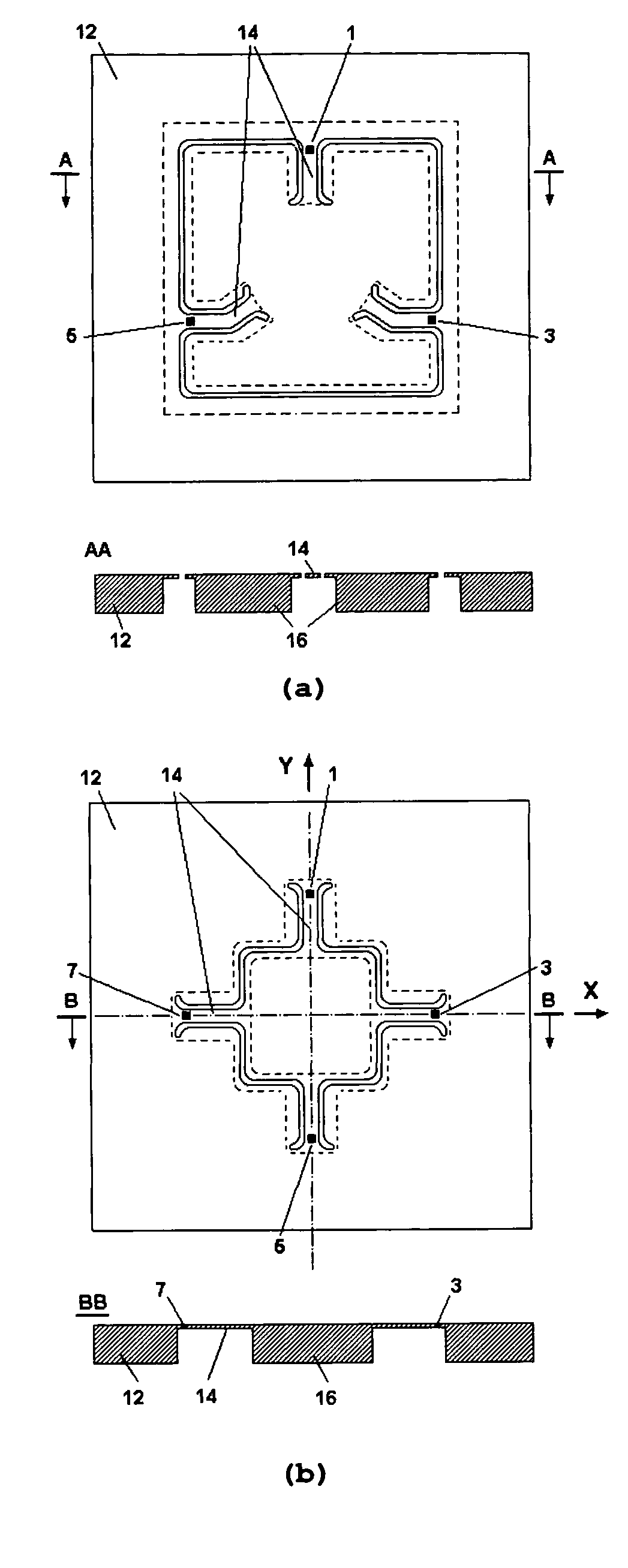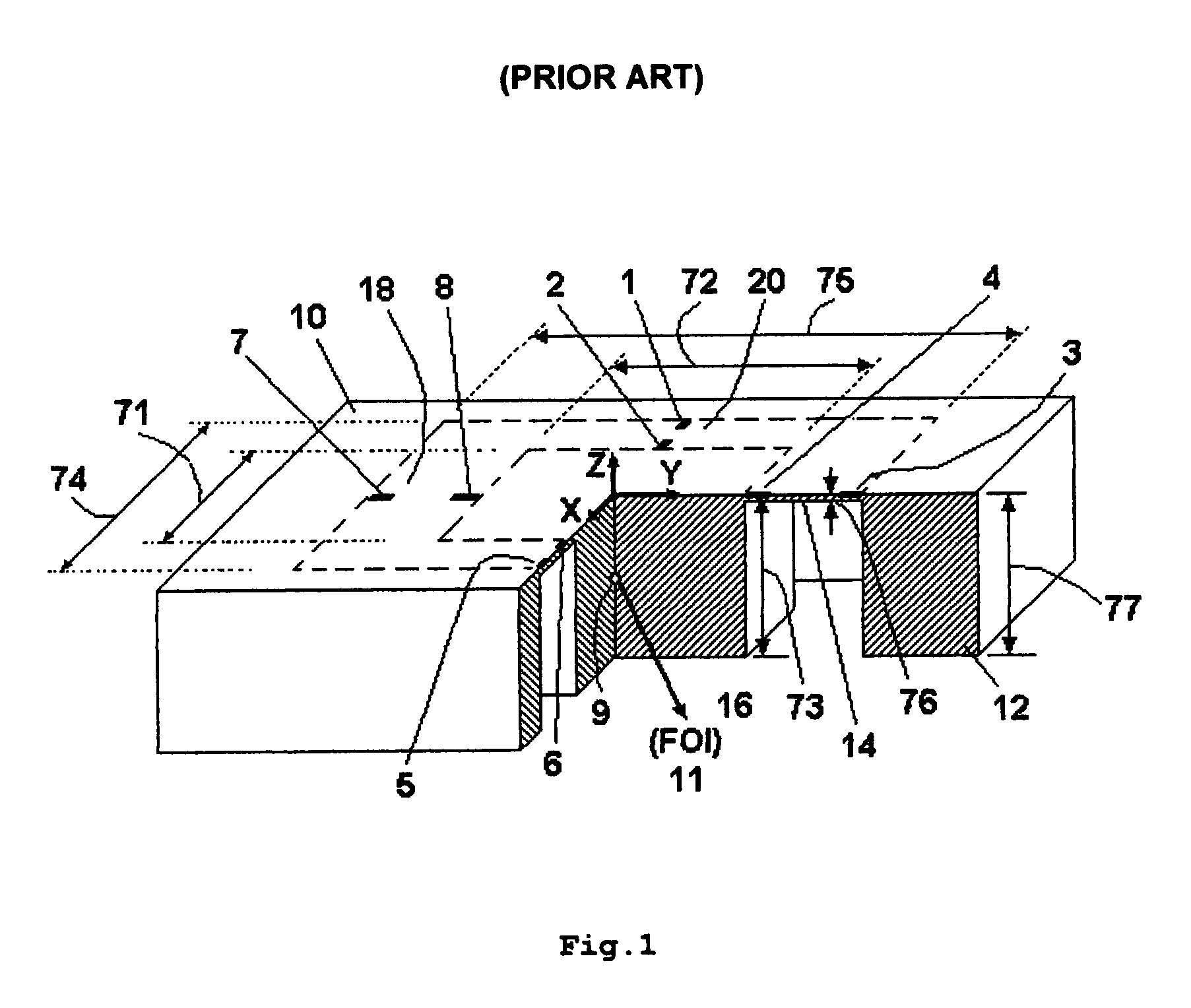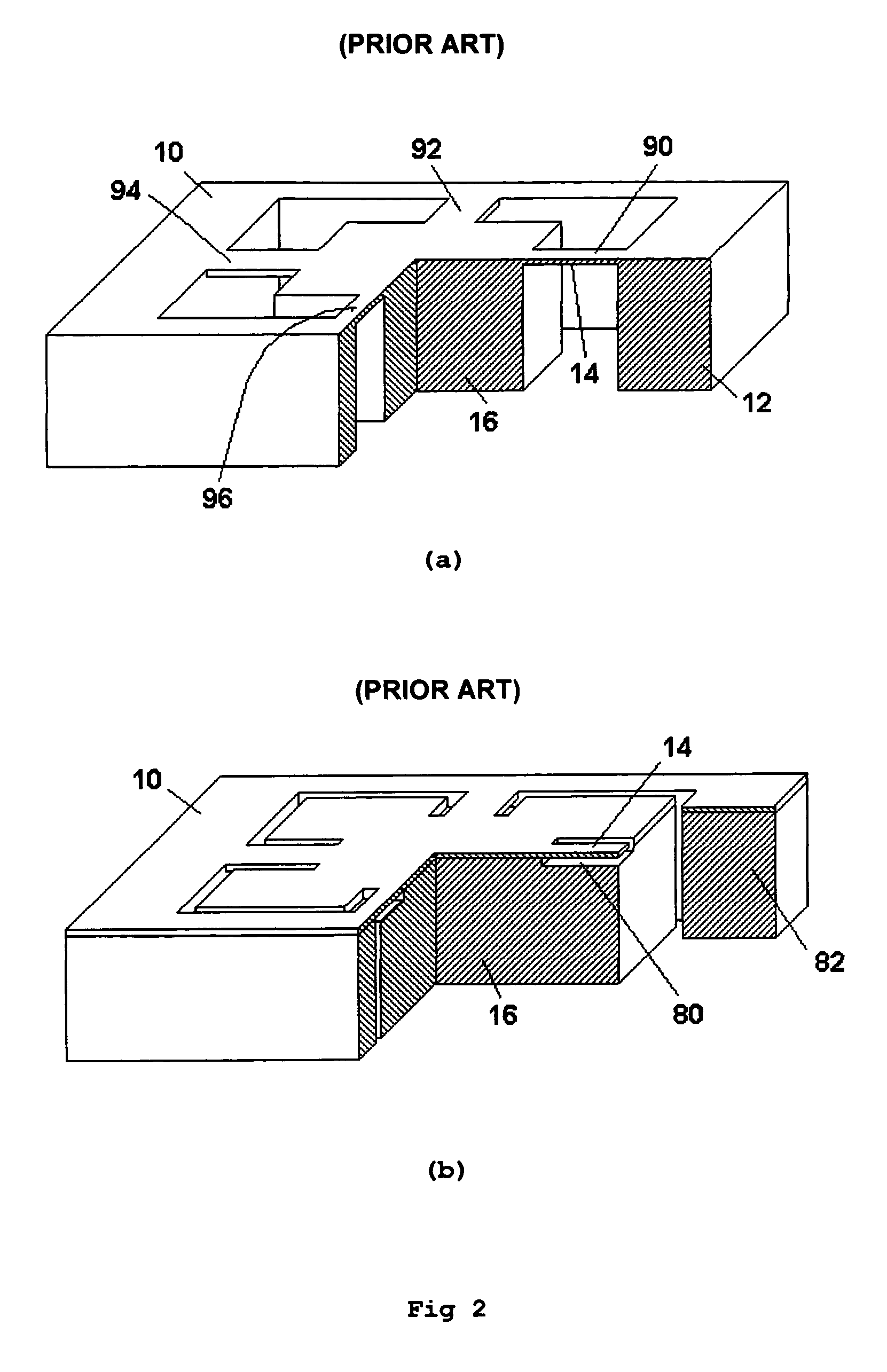System and method for a three-axis MEMS accelerometer
a three-axis accelerometer and accelerometer technology, applied in the field of micro electro mechanical systems, semiconductor devices, vibration sensors and inclinometers, can solve the problems of limiting market growth, affecting the use of non-standard initial materials, and few known mems accelerometers, so as to minimize cross-axis sensitivity and reduce the cost of functional testing , the effect of simplifying the extraction of offsets and sensitivities
- Summary
- Abstract
- Description
- Claims
- Application Information
AI Technical Summary
Benefits of technology
Problems solved by technology
Method used
Image
Examples
third embodiment
[0126]FIG. 5 shows a structure of a three-axis accelerometer die according to a The die 10 has a frame 12, uniform square diaphragm suspension with sides 18 and 20 of span 14, and a proof mass 16 in the form of a parallelepiped.
[0127] The improvement made to the three-axis accelerometer shown in FIG. 5 is by using a composite proof mass 16 consisting of two parts. The first part is integral with the semiconductor substrate used in fabrication of the sensor die. This part forms an outer portion of the proof mass 16 shown in FIG. 5. The inner portion 30 of the proof mass 16 is made out of a material having average density significantly higher than that of silicon. Using a composite proof mass gives significant increase of sensitivity. Preferably, metals and alloys like W, Au, Cu, Ta, Pb—Sn and others can be used in order to make the central part of the proof mass. For example, if silicon occupies one third and tin-lead alloy with density of 10.0 mg / mm3 occupies two thirds of the volu...
fourth embodiment
[0134] Another option of increasing sensitivity by decreasing stiffness of the suspension is the partial releasing of the diaphragm connection with the frame according to the One way to do that is to make narrow slots in the diaphragm somewhere between the connection area with the proof mass and the frame. In general, the slots can be curved. Some portions of the slots can be oriented along the radial directions toward the center of the diaphragm. The other portions can be tangential. The resulting suspension has smaller stiffness and supports the same proof mass. Therefore, structure with the slotted diaphragm has higher sensitivity than one with a solid diaphragm suspension.
[0135] Numerous suspension shapes and numerous proof mass shapes can be created by micromachining of the proof mass and making slots in the diaphragm. Some designs are shown in FIGS. 6-8.
[0136]FIG. 6 shows a structure 20 of a three-axis accelerometer. The sensor chip 18 has a frame 12 with a square opening de...
fifth embodiment
[0144] Design of three-axis accelerometer utilizing stress sensors can be improved by using suspensions with stress concentrators according to Stress concentrators localize the desired level of stress only in the specific areas of suspension, where stress sensitive IC components are located. It makes the rest of the suspension is less stressed and more reliable. Therefore, using stress concentrators allows increasing thickness or width of the suspension while keeping the same or somewhat higher sensitivity than without stress concentrators. Thicker suspension allows better control and, therefore, provides better reproducibility and reliability. Wider suspension allows placing larger number of stress sensors in the same area that can be used for reduction of cross-axis sensitivity or increasing sensitivity. Alternatively, the size of the sensor can be decreased.
[0145] An example of a three-axis accelerometer structure with stress concentrators is shown in FIG. 9. Shallow cavities 56...
PUM
 Login to View More
Login to View More Abstract
Description
Claims
Application Information
 Login to View More
Login to View More - R&D
- Intellectual Property
- Life Sciences
- Materials
- Tech Scout
- Unparalleled Data Quality
- Higher Quality Content
- 60% Fewer Hallucinations
Browse by: Latest US Patents, China's latest patents, Technical Efficacy Thesaurus, Application Domain, Technology Topic, Popular Technical Reports.
© 2025 PatSnap. All rights reserved.Legal|Privacy policy|Modern Slavery Act Transparency Statement|Sitemap|About US| Contact US: help@patsnap.com



